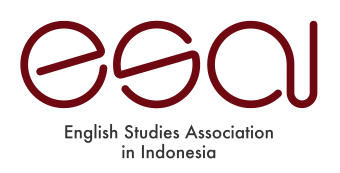Collocational Equivalence in Machine Translation
Abstract
The objective of this research is to discover the potentiality of machine translation, in this case represented by Google Translate software, in creating equivalent for the collocations in Bahasa Indonesia as the Source Language into English. The equivalence which becomes the focus in this paper is based on the concept of equivalence above word level as proposed by Mona Baker (1992). The types of collocations refer to classifications by Imran, et.al. (2009). The research is focused on the results of the machines’ translation of specific texts which correspond to the limitation as stated previously, and its concordance to the commonly accepted usage as demonstrated in the Corpus of Contemporary American English (COCA). As a result, it is found that the translation made by Google Translate has a high frequency of occurrence and naturalness.
Keywords: Collocation, Machine Translation, COCA
Full Text:
PDFReferences
Baker, M. (1997).In Other Words:A Course book on Translation. London: Routledge.
Bar-Hillel, Y. (1960). The Present Status of Automatic Translation of Languages.Advances in Computers 1, p. 91-163.
Bellos, D. (2012). Is That a Fish in Your Ear?: Translation and the Meaning of Everything. Straus and Giroux: Faber & Faber
Corpus of Contemporary American English (COCA).
Hutchins, W.J. (2001). Machine Translation over Fifty Years.Histoire, Epistemologie, Language, Tome XXII, fasc. 1 (2001), p.7-31.
Imran, I., Said, M., and Setiarini, N.L.P. (2009).Kolokasi Bahasa Indonesia.Proceedings from PESAT.Depok: Universitas Gunadarma.
DOI: http://dx.doi.org/10.30813/jelc.v4i2.326
Refbacks
- There are currently no refbacks.



2.jpg)



